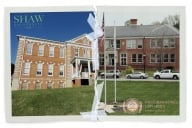You have /5 articles left.
Sign up for a free account or log in.

A classroom intervention for first-year students encourages learners to utilize on-campus supports and consider learning not as an aptitude but as a skill.
SeventyFour/iStock/Getty Images Plus
Among faculty, staff and administrators, the value that academic support offices provide students is clear. Research shows using the writing center or meeting with advisers can improve students’ overall academic achievement, persistence and graduation rates, particularly for vulnerable student populations.
Getting students inside the doors of support offices, on the other hand, can be tricky, as many students hold misconceptions about who needs help or why offices are available to them, explains Aaron Stoller, vice president for student success at Colorado College.
To bridge this gap, staff at the Colorado Springs-based college created an intervention—delivered in the first-year seminar—that helps students see learning as a skill they can sharpen and grow and helps them recognize that support offices can guide that expertise.
What’s the need: Colorado College welcomes around 550 new first-year students each year and, during orientation, highlights the resources available, but this information can be in one ear and out the other, Stoller says.
Students are often preoccupied by their own nerves and feelings about transitioning to college to focus on things like tutoring or the writing center, as highlighted by a 2022 survey at the college that found the majority of students did not know what services were available or that they were free and available to all.
Nationally, a July 2023 study from Tyton Partners found 60 percent of students are unaware of the full scope of services offered to them at their college or university.
One of the common misconceptions about support offices is that they’re “fix-it” shops, where assignments are diagnosed and improved, rather than an environment to hone and refine learning skills, Stoller says.
“The project was really about ensuring [that] the students at a point of transition … know what we offer, why we operate, how they can take advantage of it and how it participates in their growth as a learner,” Stoller says.
Another concern is equity in usage, says Steve Getty, director of the college’s Colket Center for Academic Excellence. Underrepresented minority students, first-generation or those coming from under-resourced high schools are often working from a scarcity mindset, believing that academic supports are out of reach or for those who need them more.
“Not all students were getting the same message about academic support,” Getty says. “Certain students were almost more privileged to know what to expect, how the system works, and other students were not in a similar position.”
To address this, leaders created a lesson taught in first-year seminars that reframes learning not as a pass-fail experience, but one that happens over time and alongside others.
The pilot: The intervention takes place during one class period and is structured around the idea of becoming an expert in a skill.
Instructors are staff members from Tutt Library, Accessibility Resources, First-year Programs and the Colket Center, which includes the Ruth Barton Writing Center, the Quantitative Reasoning Center (tutoring for math, science and economics), the Speaking Center, the GIS Center, and the Office of Culturally and Linguistically Diverse Experiences.
Students complete a two-sided worksheet, broken into columns with space to write and reflect.
First, students draw on experts in their own lives and draw similarities between them, similarities might be high levels of skill, advanced training, motivation or time spent devoted to the skill.
Then, learners use the example of an athlete or a professional musician to understand the four domains of expert practice: the settings where they play; the tools they use; the behaviors they engage in; and the relationships between development and application of expertise. This is completed first individually and then as a large group.
Next, students map out their own domains of expert practice, but looking at their own lives as a student: Where do they practice learning? What tools do they need? What behaviors are critical? What relationships are needed?
“An athlete, they have trainers, they have a coach, they may have an assistant coach, they do a lot of work individually, they do work with their teammates, maybe there’s a breakout group of athletes,” Getty explains. “So there are all these different ways that they approach being successful. It’s not just sitting by themselves and working hard.”
The instructor ties the exercise together by highlighting the role of experts on campus to challenge and refine students’ learning skills and how academic support staff can assist them.
The final piece asks students to reflect on how professionals address unexpected obstacles in more and less constructive ways, and how a student in college may react to challenges in their own life. This helps students see support services both as a tool for enhancement but also part of their safety net of holistic help.
By the end of the exercise, students should be able to talk about learning as an acquisition or type of expertise, the ways support offices and others on campus can contribute to that process and what a growth mindset looks like to navigate hurdles as they appear.
The impact: The initiative was piloted in first-year classes this past fall. Learners are still exposed to these resources during new-student orientation, but this class period gives them more time to consider how these can help them.
Initially, some faculty members were skeptical of the impact of giving up class time to introduce support services, but staff, equipped with data from students, were able to prove their case and gain buy-in from many who saw the intervention firsthand.
The initiative also gave staff a cause to rally together for breaking down institutional silos and creating professional development opportunities, Stoller says.
This spring, first-year students completed a survey to gauge how their awareness of campus supports grew after the intervention. Staff also collected students’ worksheets as artifacts for a coming publication, which will also pull in survey data, Getty says.
What’s next: Student feedback will also help determine program changes for the fall. One example is creating clearer messaging from each office.
The writing center is the best example, Stoller says, which champions the phrase “Any type of writing at any point in the process.” Other offices have more complex missions, so narrowing and improving the message is important.
The college can’t track that the intervention directly caused students to visit support offices, but Getty’s team can follow what percentage of students use their services and the average GPA among them, with hopes of high usage rates and higher average GPA (which would point to all students using services, not just those in desperate need).
“It’s not just about getting students in the door, it’s about getting them in the door for the right reasons,” Stoller says.
If your student success program has a unique feature or twist, we’d like to know about it. Click here to submit.








